By Alex Trukan
Defending in midfield and central areas is usually a big emphasis in a lot of teams. When out of possession, midfield is a unit that prevents the opposition from exploiting the back line as well as breaking into the final third of the pitch. Therefore, from the attacking point of view, finding ways to break beyond the midfield line provides numerous opportunities to create goal scoring chances. There are several strategies that might help in getting past the midfield unit by going through it, around it as well as over it. After the introduction of holding midfielders and very compact defending, it became even more difficult to progress beyond opposition’s midfield unit. That is why, utilising defenders and attackers in addition to midfielders when in possession is crucial to make it more effective.
Movements off the ball – playing through
The first attacking component contributing to breaking through the opposition midfield line are movements off the ball. In the first attacking phase, when the team builds up from the back, one of the movements that might be useful is one of the midfielders dropping just in behind the opposition’s strikers. It is crucial to stay behind the strikers not allowing them to drop back and mark man to man. That will restrict them to screening what will instead force one of the midfielders to track the run or stay in line leaving plenty of space between the units. That will in turn enable the midfielder to get on the ball and receive to play forwards.
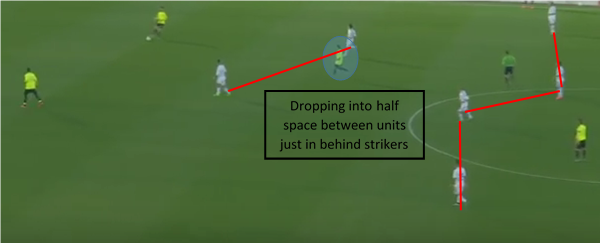
Another key player making the movement that makes the penetration possible is the striker. Similarly to the midfielder, he would drop deeper but remain behind or between the opposition’s midfield unit. Striker should try to drop into space in which the opposition’s midfield line is unbalanced (i.e. where the player went forwards to track the runner).
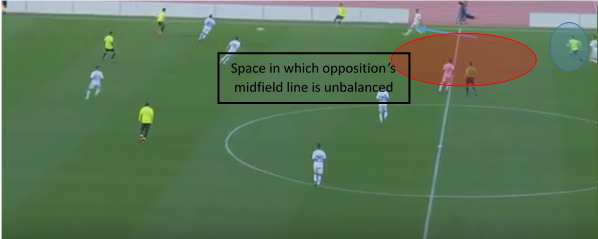
Apart from the gaps in midfield, that kind of movement will pose a problem for the opposition’s back line as well. Space that emerge in behind can be used by second striker or wingers making runs into it. After the pass to the striker is made, support from behind should be provided to bounce the ball off if needed.
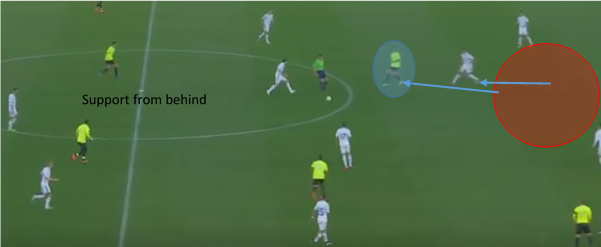
Switching play – playing around
With a lot of teams playing very compact and narrow, as well as utilising defensive midfielders positioned in half spaces, it is increasingly difficult to break through the units. Second option involves playing sideways to create an opportunity to play around. Circulating the ball horizontally not only gives an opportunity to play through wide areas but also helps to create gaps between the opposition players. The key is to have good access to the players around and away from the ball by providing support in front, sideways and behind the ball.
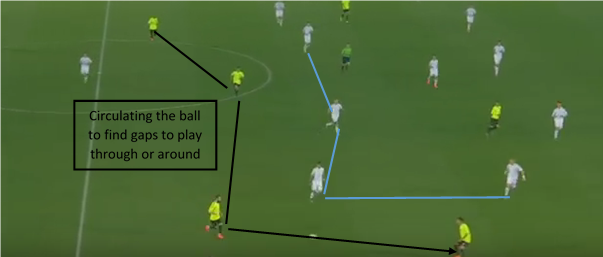
As the ball is switched to the opposite side, it is useful to play the pass into space rather than into feet. If possible, the pass should be played into space behind the midfield unit what will force the opposition’s back line to apply pressure on the ball. Here the crucial role of the players in front of the ball (strikers) comes which should try and create space to progress into.
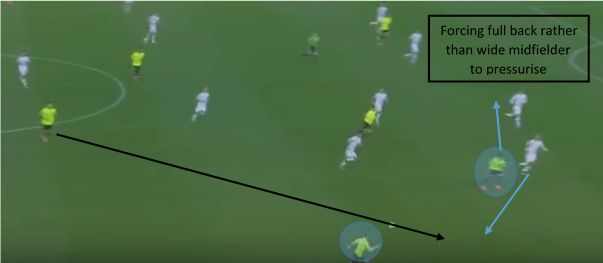
Players in half spaces and combination play
In response to the defensive midfielder playing for the defending team, the attacking side might choose to play with a number 10 or striker dropping between the opposition’s forward and midfield units. That is a perfect opportunity to receive the ball with more time on it as well as pose problems for the oppposition players around when to press or drop. Receiving on the front foot might give that extra advantage.
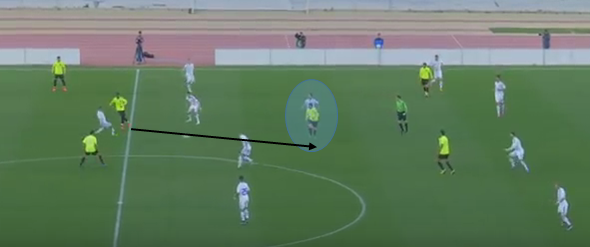
Having players between the lines also provides a great opportunity to combine play using wall passes and one-twos. Speed of execution as well as communication are the keys to success in this area. Combinations might emerge in central as well as in wide areas of the pitch.
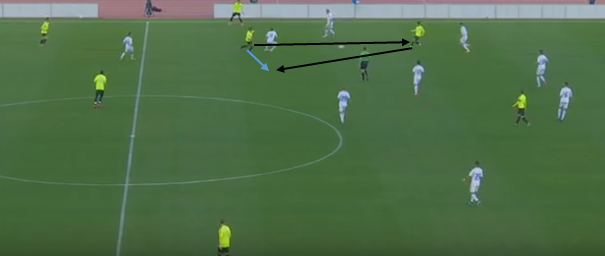
It is important to remember that getting beyond the opposition midfield line is not the end product and should be only used as a platform to further create chances and progress forwards or produce a different end product such as a cross or shot on goal.
By Alex Trukan, Development Coach, Nottingham Forest
@AlexTrukan


